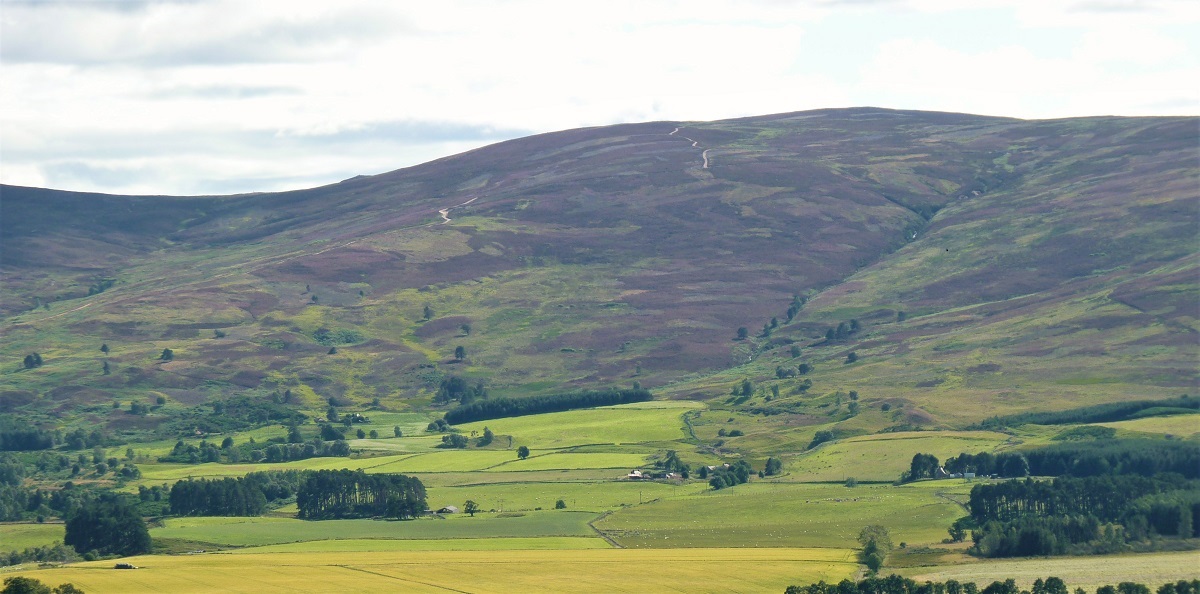A window on future land management?

In our last blog on carbon audits and the natural capital assessment undertaken at Auchnerran, our demonstration farm in Aberdeenshire, we considered whether these initiatives could help provide a window on future land management. Six months on, how do we reflect on our early expectations?
There is no doubt we have learnt a lot from the work to date. We can use the results from the carbon audits to target fuel reductions, review our use of fertilizer and address Green House Gas (GHG) emissions produced by the sheep flock. However, we don’t yet have a clear view on soil carbon content and health, which will be crucial to understanding the full balance of GHG emissions and carbon sequestration. And there is more to do on valuing the full range of biodiversity at the farm.
Carbon auditing
Our carbon audit was undertaken using AgReCalc because this allowed us to apply for Scottish Government funding to cover the cost of the process. We understand that AgReCalc will soon include soil measurements. The key aim of the audit is to help deliver net-zero emissions from food production while increasing the level of both efficiency and farm productivity. This has presented us with a particular dilemma. Auchnerran is a hill-edge farm in a hard environment on the eastern side of the Cairngorms massif, but it is recognised for holding nationally important populations of wading birds including curlew, lapwing, and oystercatchers. The advice from the carbon audit indicated that increasing the sheep stocking density whilst applying a similar level of fertiliser would result in greater utilisation of forage and reduced CO2 emission/kg. This is most undoubtedly true but scaling up the number of sheep on the ground could impact on the presence of the wading birds, whilst the absolute amount of GHG emissions would also increase. Although research into sheep enteric fermentation is more limited than that for cattle, we might still expect to bear down on emissions through genetic selection, feed additives and intelligent use of our grass.
Yet this still raises the question as to whether the current drive for efficiency led by the carbon audits is stacking advice and action in favour of productivity. Some audits do now include biodiversity assessments. Yet until there is the same specific measurement of wildlife and habitats as there is for emissions and sequestration, we are concerned that work to support our farmed environment will take second place.
Natural Capital assessment
In assessing our natural capital, we wanted to get a handle on the value of our key natural assets and the dividends they can produce (such as food and water provisioning, regulation of climate and flooding, recreation, soil formation and biodiversity). We now have a snapshot of our assets and their benefits, but again, there are areas of uncertainty that need further investigation.
We particularly wanted to investigate how we might value those significant populations of breeding wading birds at Auchnerran and the importance of looking after them. So far, placing ‘value’ on species assemblages as part of the demonstration farm’s asset base is proving elusive, but we continue to explore how we might do this with Eftec, the consultants advising on our Natural Capital accounting. We are also aware that NatureScot’s Natural Capital projects team are exploring pilot initiatives that may also help find that equilibrium between climate change and biodiversity requirements.
Future proofing
Development of more precise biodiversity measures is essential if we are to track the outcomes of this work – a point also made in From Here to 2045, the latest report from the Farming for 1.5° Group. An excellent step forward in thought leadership, the document acknowledges that increasing biodiversity remains an urgent challenge for Scottish land managers and wider society to tackle. At Auchnerran, we continue in our quest to match productive, efficient farming with healthy habitats and thriving wildlife.